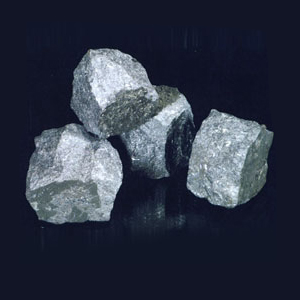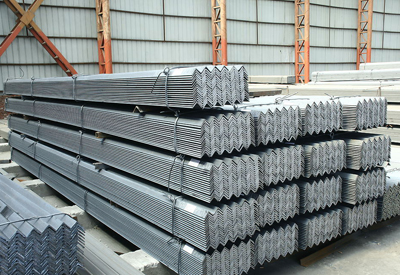Zambia’s mining industry is successfully navigating “challenging times” characterized by a power deficit, falling international commodity prices and, until recently, an unsustainable mining tax legislation, says professional services company KPMG.
“In addition to the mining industry mitigating falling commodity prices, particularly those of copper, with current prices below the ideal minimum $6000/t, the Zambian mining industry had to reduce its electricity consumption in July and August by up to 30%, which significantly impacted on production,” KPMG Zambia tax partner Michael Phiri said.
The country is experiencing a power supply deficit of around 30%, as water levels at Zambia State-owned power utility Zesco’s hydroelectric plants decreased significantly, owing to drought.
Subsequently, Zesco and mine power supplier Copperbelt Energy Corporation decided to make 70% of the country’s current required power available, while the remaining 30% will have to be imported, according to a Reuters media report in August.
Mining companies operating in the country, such as Vedanta Resources, First Quantum Minerals, Glencore, Vale and Barrick Gold Corporation, have the option to import electricity generated from thermal and coal-fired power plants in the region, which has a power capacity of about 192000MW, Phiri says.
“Nevertheless, this creates an additional challenge, as the electricity would have to be imported at a much higher cost, which adds to the cost challenges mining companies have to mitigate.”
Phiri emphasizes the effect the current power deficit has on major copper producers, such as London-listed Glencore, which runs Mopani Copper Mines (MCM), in Kitwe, where the company has sunk a new shaft, Synclinorium, to extend underground operations for another 20 years.
Although MCM achieved record production of about 45000t of copper in the first quarter of 2015, Phiri believes that, as a result of the power deficit, MCM’s forecast production target will likely not be met.
MCM’s budgeted copper production for this year is projected at 219227t.
“Meanwhile, Canada-based miner First Quantum Minerals’s Sentinel copper mine, which is slated to produce about 300000t/y of copper once operations are ramped up, might not achieve these production figures either,” he suggests.
However, Zesco restored power to the Sentinel mine last month, with the operation “having been given unlimited power”, the miner notes in a statement.
Furthermore, the processing operations of Britain mining company Vedanta Resources’ Konkola Copper Mines, which, in June, imported semipro-cessed copper from Chile to ensure its Nchanga smelter operates at full capacity, might also suffer because of the power deficit, Phiri says.
Power Prospects
Nevertheless, he highlights that several power plant projects are currently under way in the country – most notably the development of a coal-fired power plant in Maamba, by Maamba Collieries, a subsidiary of diversified organization Nava Bharat Singapore.
The $800-million project next to the coal mine, in Zambia’s Southern province, was 80% complete, Lusaka Times reported in July. Phase 1 of the project, expected to start producing power this month, will generate 300 MW into the national grid for distribution by Zesco. Following Phase 2, it is envisioned that the completed plant will generate about 600 MW.
Additionally, the Itezhi Tezhi hydroelectric power plant is expected to come on line before the end of the year. The $255-million plant, also located in the Southern province, will generate 120 MW of baseload capacity.
“These plants, expected to come on line in the fourth quarter, will ease the power strain, assisting the nation and the mining industry at large,” Phiri says, emphasizing the importance of the mining sector, which currently contributes more than 90% of Zambia’s foreign exchange.
Taxing Legislation
Phiri, however, acknowledges the substantial pressure the sector faced in the past, owing to the mineral royalty tax and the value-added tax (VAT) export rules, or VAT rule 18.
Prior to being amended, the VAT rule 18 required exporters to produce particular documents from final-destination countries to claim tax refunds, while a subsequent condition also required that the final buyer of the commodity deposit the money.
However, since the amendments to the rule, which came into force in March, the final buyer does not need to deposit the money, while documentation from transit locations, such as the ports of Durban, in South Africa, and Dar es Salaam, in Tanzania, is also accepted for refund claims.
“Changes in this law … have unlocked the VAT refunds for mining companies,” Phiri notes, adding that refunds of more than $600-million were withheld from mining companies.
He further asserts that the refunds alleviate the financial strain amid current commodity prices, as mining companies can meet their operational and expansion costs.
Meanwhile, Phiri highlights the recent reversal of the mineral royalty law.
The mineral royalty law, originally set at 6% for mining operations, was increased in January from 6% to 20% for openpit mines and from 6% to 8% for underground mines.
“This decision proved economically unsustainable and necessitated a reversal to a 6% mineral royalty for underground operations and a 9% mineral royalty for openpit operations,” Phiri says.
He nevertheless acknowledges the detrimental effects of the legislation on exploration, investor confidence and reinvestment in existing operations, with exploration companies considering exiting the Zambian mining market, owing to challenges in securing investment and equity partners, while major Vale closed its operations earlier this year.
Other companies are focucing on care maintenance, and are reducing activities and capital expenditure in terms of expansion while awaiting the changes in legislation and improvement in commodity prices.
Upbeat Outlook
“The future looks promising for Zambia and for the mining industry in particular, as the underlying electricity and legislative problems are being resolved,” Phiri says.
He notes that, although the Zambian mining industry, Africa’s second-largest copper producer, would be “lucky” if it produces 700000t/y of copper in 2015, he believes copper mining could produce up to one-million metric tons of copper in 2016.
However, Phiri warns that the next six months will remain challenging if adequate electricity is not added timeously to the grid.
- [Editor:Juan]



 Save
Save Print
Print Daily News
Daily News Research
Research Magazine
Magazine Company Database
Company Database Customized Database
Customized Database Conferences
Conferences Advertisement
Advertisement Trade
Trade




 Online inquiry
Online inquiry Contact
Contact

Tell Us What You Think